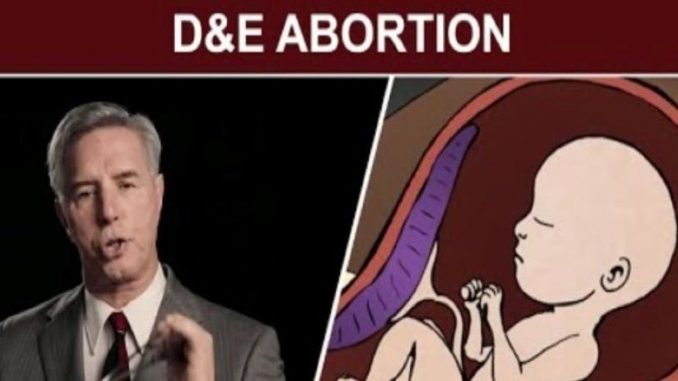
LiveActionNews.org — In 2005, pro-life activists Wendy Williams and Ann Caldwell published a book called Empty Arms: More Than 60 Life-Giving Stories of Hope from the Devastation of Abortion, which presented letters from 60 women who regretted their abortions. Each woman in the collection tells her story in her own words. All 60 women found healing through post-abortion ministries and their own religious faith. Williams and Caldwell also helped to establish the National Memorial for the Unborn.
Ann Caldwell is unique because not only did she have an abortion, she also worked in a facility which committed them. She had her abortion while in college, and began working at the facility soon after. In her testimony in the book, she describes the abortion and its aftermath:
I shall never forget the sounds of the suction machine, the odors of the medical room, or the harsh demeanor of the nurse. I cried uncontrollably for a day. I was very sad at the time, but I quickly buried it… Within several months, I was getting such poor grades in school that a professor told me, “Frankly, I don’t know how you got admitted to this university.” My slide lasted several years, despite the fact that my grades improved. I earned a Master’s degree, but my self-esteem was so poor that I spent three years dating a guy who was addicted to drugs.
Caldwell found no compassion at the facility, and the procedure itself was painful and distressing. Despite Caldwell’s attempt to bury her feelings, it impacted every aspect of her life. She tried to move on, but her guilt and regret led to self-hatred and shame. Her grades plummeted. In the end, she was able to struggle through school, but the abortion took a tremendous emotional toll.
While still struggling with regret, Caldwell took a job at an abortion facility. She needed to make money for college tuition. On a subconscious level, she may have been trying to justify her own abortion by helping other women make the same choice. Every time a woman went through with one, she was, in a sense, validating Caldwell’s experience. Caldwell also was surrounding herself with people who supported abortion and approved of her choice. Former Planned Parenthood director Abby Johnson has said that 70% of Planned Parenthood workers have had abortions themselves.
Caldwell worked at the facility two days a week, talking to women beforehand and accompanying them through the surgery.
To earn money to pay my tuition, I worked every Saturday and Wednesday at the local abortion center. The money was great, and I knew what to tell the girls to expect. I passed out birth-control pills, explained what would happen, and even held their hands during the procedure. The sights and sounds were very familiar to me.
Caldwell believed she was helping women by walking them through the abortion process. Now she knows her actions only led to death for preborn children and suffering for their mothers.
RELATED NEWS: If Late-Term Abortion Isn’t Torture, What Is?
There was, however, something Caldwell was not aware of when she was helping women abort. Although she held the hands of women during their abortions, she never looked at what the doctor was doing. She never watched an abortion, or saw the remains of aborted children. Then, one day, she was invited by the abortionist to watch an abortion procedure:
Once the doctor asked if I wanted to watch the procedure, which I thought would be interesting… It was so unforgettable, gruesome, and shocking that I could no longer keep my pain buried.
Caldwell is not clear about what type of abortion she witnessed. In the first trimester, abortions are done by aspiration. The abortionist dilates the woman’s cervix and inserts a medical instrument called a cannula, which is attached by a tube to a suction machine. When the suction machine is turned on, the baby is pulled out of the woman’s body and his or her remains are collected in a glass jar. After about nine weeks of pregnancy, little arms and legs and other body parts can be seen in the abortion remains.
Former abortionist Dr. Anthony Levatino describes how this type of abortion is done in this video:
Another type of abortion that is even more gruesome is a D&E abortion, which is done in the second trimester. In a D&E, the abortionist uses forceps to dismember the baby and pull him or her out piece by piece. Dr. Anthony Levatino illustrates this procedure:
Whether or not the abortion was done by aspiration or D&E, it had a profound impact on Caldwell. She was able to see, for the first time, the reality of what abortion does to preborn babies. She soon quit her job.
RELATED NEWS: Can't Raise Your Baby? Plenty of People Can.
Caldwell later got married, and the abortion continued to affect her life. When she became pregnant with her husband’s child, she struggled with grief and guilt over the baby she aborted.
Meeting and marrying my husband was the beginning of my healing. I was so sure that God would punish me for my abortion by not letting us have children that I was impatient to start a family. My first pregnancy was spent awake at night in tears, sobbing over the lost baby, over my own sin, and over the agony my aborted child endured.
Eventually, Caldwell found healing, and went on to help other women. She shares her story in Empty Arms in order to help other post-abortive women know they are not alone.
This article was originally published at Live Action News.
Be the first to comment